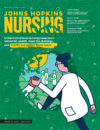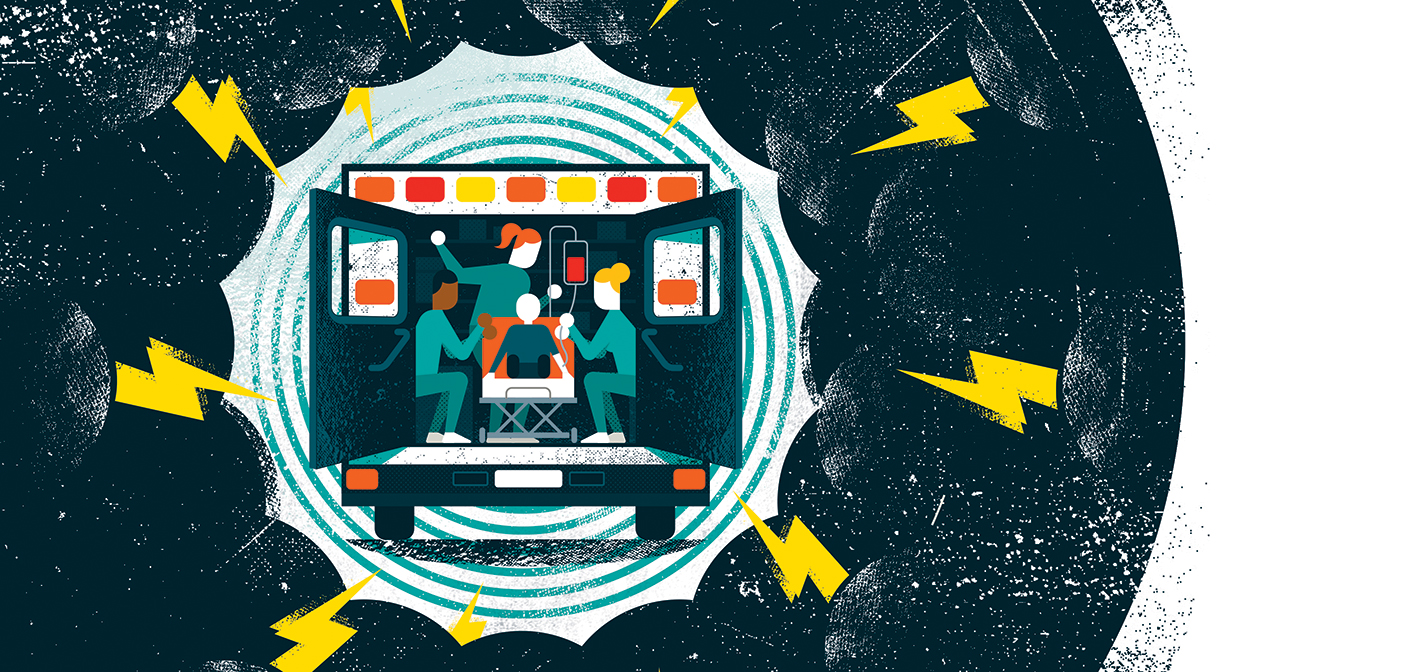By Ashley Festa
Rare ECMO transports require critical thinking, on the go and under pressure
When Philomena Costabile, RN, is bouncing down the road in the back of an ambulance with a child whose entire blood volume is circulating outside the body, she stays calm by focusing on the worst-case scenario.
These are life-or-death transports for children on extracorporeal membrane oxygenation (ECMO), a heart-lung bypass system for kids with heart failure in which all the blood is pumped outside the body and then circulated back in. Children on ECMO may need a heart or lung transplant, or they may have a heart infection as a result of pneumonia, for example. “We must be acutely aware that we’re prepared for anything that can happen,” explains Costabile, assistant nurse manager for the pediatric critical care transport team. “After assessing the situation, we think about the worst thing that could happen and how to prevent it.”
The ride can be a treacherous one. With the large and cumbersome ECMO pump, IVs, breathing tubes, and other equipment, there isn’t much room left in the ambulance for the health care team, limited to one paramedic, one attending physician, one nurse, and one respiratory therapist. “The thing that’s really stressful about transport is that you’re in an environment that’s not your hospital,” says Costabile, a 1996 graduate of the Johns Hopkins School of Nursing. “You can’t call for backup; you have to do it yourself.”
“Everyone can give their opinion because the emphasis is on communication and group dynamics … everyone brings a specialty skill.”
— Philomena Costabile, RN
Such transports are rare. Costabile can count on one hand the number of calls she’s had for pediatric ECMO transport in the past six years, when Johns Hopkins began offering the service. So far, the farthest ECMO transport has been about 100 miles, approximately two hours by ambulance.
The low volume of cases means fewer real-life opportunities for Costabile and her multidisciplinary team to keep their skills sharp, making practice sessions that much more vital. Twice a year, members of the transport team come together for an ECMO in Transport education day, partnering with the Hopkins’ simulation center to practice their carefully choreographed collaboration.
“You’re taking care of the most critical children in a non-hospital setting, and everybody has to have the same mental model: What is happening? What’s my job? How are we going to do this together?” Costabile says. “Everyone can give their opinion because the emphasis is on communication and group dynamics … everyone brings a specialty skill.”
Though Costabile has been the only nurse on the Johns Hopkins team to take part in a live ECMO transport, that’s just a coincidence. All pediatric critical transport nurses and other caregivers prepare for the call.
“Being a transport nurse can be the most frightening thing in the world,” Costabile says. “The reason I continue to do it and dedicate myself to making this program pristine is that it changes so many lives in the community. That’s what nursing is, right?”
ILLUSTRATION BY HYLTON WARBURTON

